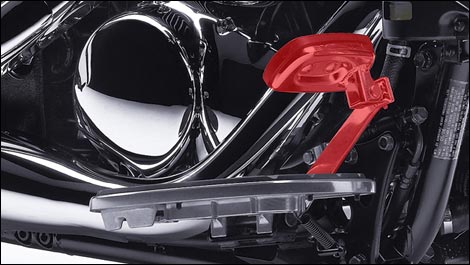Nobody can ever really foresee an emergency situation. Yet, you're 100 percent sure to be involved in one some day. The best way to overcome the threat -- and remain safe and sound -- is to be prepared. To this end, you can train your reflexes whenever you're riding --
really.
 |
| Looking far ahead allows you to anticipate danger. |
Look far ahead and try to spot potential danger sources. A child running towards the street, a distracted cyclist not riding in a straight line or a car driver who regularly applies the brakes can create problems for a motorcycle rider. In order to react judiciously, you have to remain careful and apply the appropriate strategies and techniques for each situation, like threshold braking, lane changing or sudden accelerations. By staying alert, you'll stand a better chance to make the right decision based on your observations. Therefore, you'll be able to prevent or at least reduce the risk of facing an emergency situation.
What is threshold braking?If an obstacle stays in your way, you have to use your skills to ensure a safe braking maneuver. With an ABS-equipped automobile, even the average Joe can get out of trouble. However, with a motorcycle, that's another story. Every action is more complex... at least on the surface. In reality, the principles of threshold braking and to-the-limit braking are fairly simple.
 |
| Rear brake pedal (highlighted in red). |
Emergency braking on a motorcycle is a three-step technique that needs to be performed as quickly as possible. The first step is to release the throttle so that the bike starts to decelerate by itself. This first deceleration, which represents about 15 percent of a motorcycle's total braking potential, comes from engine braking. The second step is to apply the rear brake a few milliseconds before the front brake in order to prevent the bike's weight from transferring to the front and to maintain the engine braking force by keeping the rear wheel on the ground. You have to apply the rear brake until you reach the traction limit of the tire. And the front brake must be perfectly modulated during the entire maneuver, otherwise the directional precision of the bike and the engine braking power will be significantly reduced. The third and final step is to declutch just before the motorcycle comes to a full stop.

